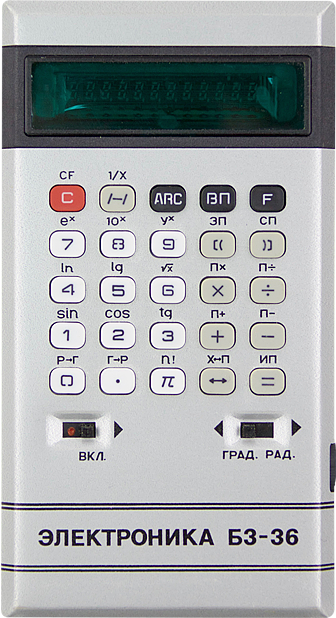

The calculator’s debugger supports a number of automation functions, such as iteration statements, subroutines, and step-by-step mode for running and inspecting programmes, with three-step display of codes.
Striving to streamline the calculator, the developers simplified the microcode for processing errors and anomalies, which spawned a number of undocumented features. For example, with the degrees-radians switch positioned in the middle, the later models could calculate trigonometric functions using radians.
Entire communities and columns in prominent magazines grew around the numerous inexplicable and surprising undocumented features of the device, some of which were even exploited in games and other programmes. One such experiment was featured in the Science & Life magazine (No. 6, 1988): in Chelyabinsk, N. Smirnov replaced the calculator’s internal 120kHz clock generator with an external 200 kHz one, which resulted in a 1.8x performance boost and doubled power consumption.
The B3-34 is equipped with a 12-digit vacuum cathodoluminescent display. Calculations could be made with either a floating or natural point.
The device can be powered by four D-0.55s batteries or a BP2-3 line adapter. The time of continuous work on one set of batteries ranges from two to four hours.
Dimensions: 185✕100✕46 mm.
Weight: 0.39 kg.
Sources:
https://ru.wikipedia.org/wiki/%D0%AD%D0%BB%D0%B5%D0%BA%D1%82%D1%80%D0%BE%D0%BD%D0%B8%D0%BA%D0%B0_%D0%913-34
http://www.myadel-gimnaz.by/node/443




